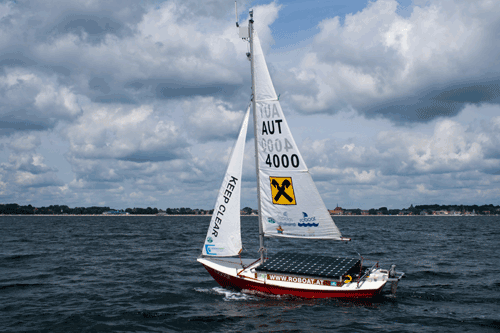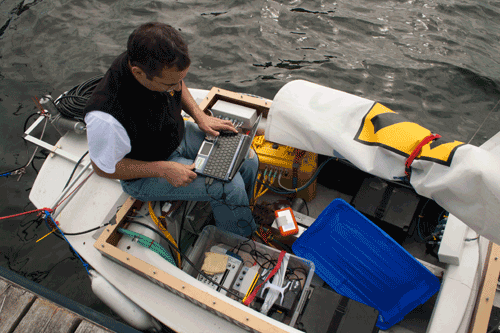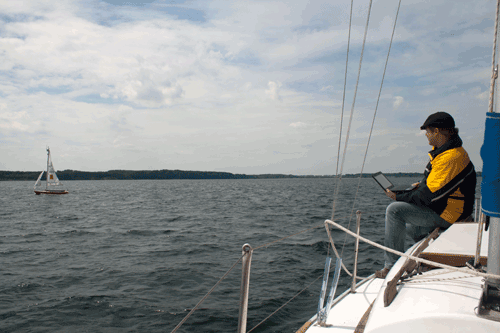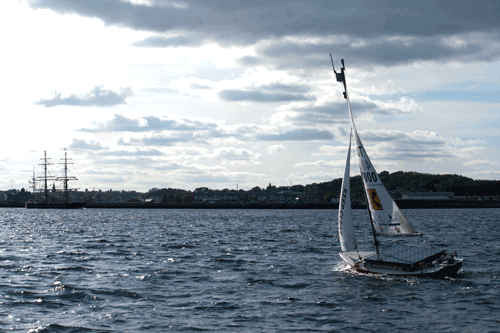Robotic sailing boat to attempt world record this summer
While performing a research project, the ASV Roboat stands the possibility of breaking a world record
From July 9 to July 19, the ASV Roboat, a fully autonomous, unmanned sailing boat, will be used in a multi-day research project in which during the course of the mission, will lead to it breaking the current world record for robotic sailing.

The ASV Roboat will attempt to break the world record for distance traveled by an unmanned robotic vessel.
The Roboat will cover 150 nautical miles (172 land miles) of the Baltic Sea and remain in operation for up to 100 hours without human interruption. It will have to deal with all unforeseen situations and perfect the complexities of sailing, from route planning to maneuvering, without any human help whatsoever.
It’s all in the name of science . . . and breaking records, of course. You see, the current world record is 78.9 nautical miles (91 land miles), held by a research group from the French engineering institute ENSTA Brest, which was set back in March 2012.
So the ASV Roboat group won’t just break the record, they will wind up smashing it.
Research project
The Roboat developers are a research team based out of the Austrian Society for Innovative Computer Sciences. The project that they are using their vessel for is in collaboration with marine biologists from Oregon State University.
The purpose of the mission is to study a group of endangered harbor porpoise in the Baltic Sea. The boat will have an underwater microphone attached to it so that the sound of the marine mammals can be recorded. This will provide the team with valuable information as it pertains to migration routes, pairing sites, and the animals’ communication behavior.

Team member configures the Roboat’s scientific equipment.
And since the robotic sailing boat moves silently, without any humans on it, the marine mammals will likely not be scared off. This present the very unique opportunity to observe these marine mammals undisturbed for long periods of time.
Additionally, the ASV Roboat team plans to gather important scientific data from the boat’s first long-term mission. An on-board computer is capable of storing more than 100 measured values per second, data that will be used in a subsequent analysis for the improvement of robotic sailing algorithms.
Roboat technology
The Roboat only needs humans to enter its final destination coordinates; otherwise it decides best routes and performs sailing maneuvers in response to changing winds, tides, etc., on its own. The actual design of the boat is based on a sailboat made to teach kids; so it’s small, but extremely stable. It measures a little over 12 feet long, and comprises a 132-pound keel-ballast to bring the boat back upright should it ever experience serious heeling. Additional loads of up to 110 pounds are possible without affecting the boat’s sailing behavior.

Researcher monitors the ASV Roboat from a distance.
There’s a ton of technology on board, including a GPS, compass, and wind speed detector, all to help the boat decide routes and maneuver against the wind. The rudders, sails, tacks, and jibes are all automatically controlled by incoming data from the different sensors, which gets analyzed by an onboard PC running Linux.
On-board solar panels generate close to 285 W of energy (when in full sun), and a methanol-powered fuel cell provides 65 W as the back-up power source.
A three-stage communication system is included with the Robotat, combining WLAN, UMTS / GPRS, and an IRIDIUM satellite communication system. In most cases, this allows researchers continuous, real-time access to the boat from shore. Such a system comes in particularly handy in instances like, say, tracking and navigating a lost ship, detecting and reporting system malfunctions, or, in this case, transmitting information on acoustic detection of a marine mammal to a shore-based command center.
Competition
Robotic sailboats have grown in popularity since 2005, when two engineers established the Microtransat , a competition which challenges teams to create sailboats that can cross the Atlantic Ocean on their own. To date, no one has succeeded.
The Roboat, however, has won a spinoff competition called the World Robotic Sailing Championship , which was started in 2008. In recent years, the vessel has successfully defended its world championship title against international competition.

The Roboat sails in action on the Eckernförde Bay.
Outlook
“Because they are energy self-sufficient, in addition to marine biology, these solar-energy-powered robotic sailing boats can also be used for tsunami-early-warning systems, search operations, meteorological measurements, and the recovery of oil spills,” says project manager Roland Stelzer, describing the future of the technology.
Additionally, the team foresees a day when robotic boats are operated by humans. The sailors would be able to give the system commands, thus easing the everyday duties of the on-board crew.
Learn more about the Roboat and follow its progress when it deports the Baltic Sea coast July 9. ■
Advertisement
Learn more about Electronic Products Magazine





